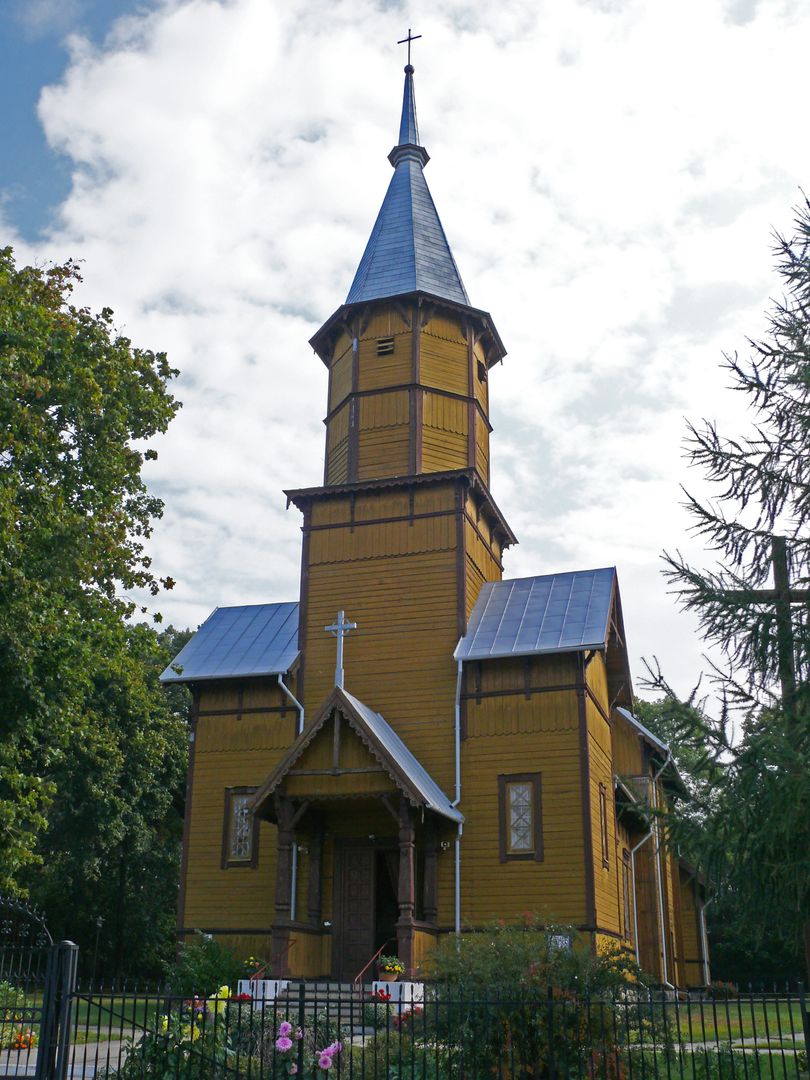Church of the Transfiguration of the Lord in Horbów
7.88

Overview
The Church of the Transfiguration in Horbów is a Roman Catholic parish church that was originally built in the early 20th century as an Orthodox church. The history of this site dates back to the 16th century, when an Orthodox parish existed here, which, after the Union of Brest, transitioned to the Uniate Church. In 1875, following the dissolution of the Uniate Diocese of Chełm, the Horbów church came under the jurisdiction of the Russian Orthodox Church, a move that was met with protests from the local population. The new church, designed by Vladimir Pokrovsky, was consecrated in 1908, but as early as 1923, after wartime events, it was handed over to the Catholic Church.
The architecture of the church is wooden, resting on a stone foundation, with an oriented structure, a tripartite layout, and a two-story tower. The interior has been enriched with new liturgical elements and paintings, while the main altar reflects Orthodox traditions. The church houses historic liturgical vessels and icons, including the Icon of the Mother of God of Horbów, attributed to a 16th-century tradition. The temple has undergone numerous renovations, including significant work between 2000 and 2005.
The surroundings of the church are steeped in history, with remnants of former Orthodox and Uniate cemeteries, adding cultural depth to the site. Interestingly, the original cemetery was destroyed, leaving only a single tombstone, and locals long resisted forced conversions. The church in Horbów stands as a testament to the complex history of religious relations in the region and the endurance of traditions carried through the centuries.
Location
2025 Wizytor | All Rights Reserved